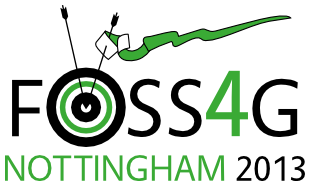Presentation
WMS-V: A New Way To Visualise Geo-temporal Data
Tim-Hinnerk Heuer (Landcare Research Ltd, New Zealand) with Andrew Cowie (Landcare Research Ltd, New Zealand), David Medyckyj-Scott (Landcare Research Ltd, New Zealand)
12:00 on Friday 20th September (in Session 34, starting at 11:30 a.m., Sir Clive Granger Building: A39)
Show in Timetable
There is an increasing amount of geo-temporal data being created. Examples include weather patterns, population movement of plant and animal species, epidemics of the Avian flu, shopping patterns. Generally speaking geo-temporal data is big data which can be difficult to visualise in a web browser. It can be even more challenging to allow a user to dynamically explore the data at different scales and for large geographic areas. Or is it? We have explored different ways of achieving this and in the end came up with a solution which employs a web service, WMS-V, to produce animated web maps or what we call ‘mapimations’. Services like WMS, WMS-C, TMS, etc. delivered by technologies such as MapServer and GeoServer and the like basically tile up spatial data into image tiles that the browser requests. We thought this must be possible for data that changes over time and not just static imagery. Essentially a video is just a series of images, called frames. These frames are shown in quick succession to give the impression of something happening on the screen. WMS-V uses this same technique, however the frames are map images / tiles. Starting with a dataset for a particular phenomena across space and time, maps are requested from a WMS or other tile generating service. Through an automated process, the tiles are stitched together into a standard video format that can then be played in a browser. All tiles for a given geographic extent, scale set, and time period are requested and video tiles created. These videos are cached in a file / directory structure which is readable by the map serving software. Then, dependent on the request sent to this server, videos are sent back to the browser for a particular spatial extent. A fork of OpenLayers has been created, extending its functionality to assemble the correct requests, but instead of static images, it can now request video tiles. Our simple use case is the possum pest problem in New Zealand. We have modelled potential possum population growth in 30 years starting from 2008 and created an instance of WMS-V to visualise the data for animal health specialists and local government. Users can pan and zoom to any part of the country and watch how possum numbers grow and decline over time. We will also show examples of the approach being used for other geo-temporal data. Feedback about both the approach and result has been very positive and we believe WMS-V could be used for all sorts of data. Come and learn whether it will work for you!
